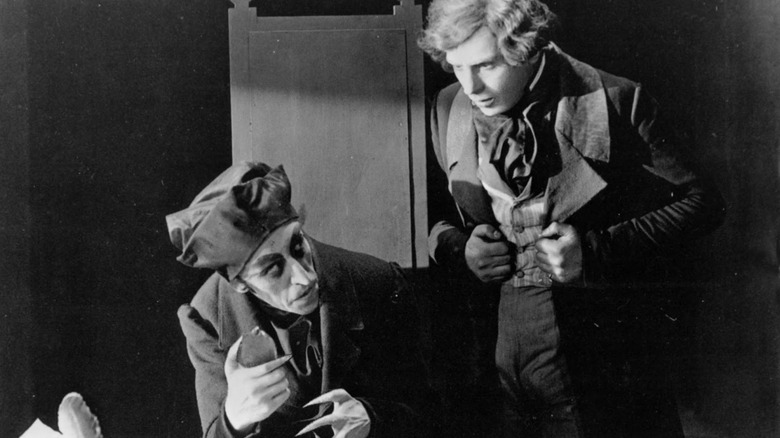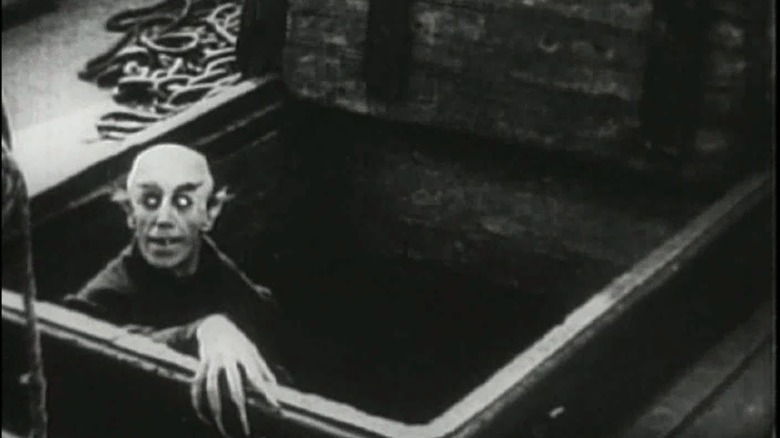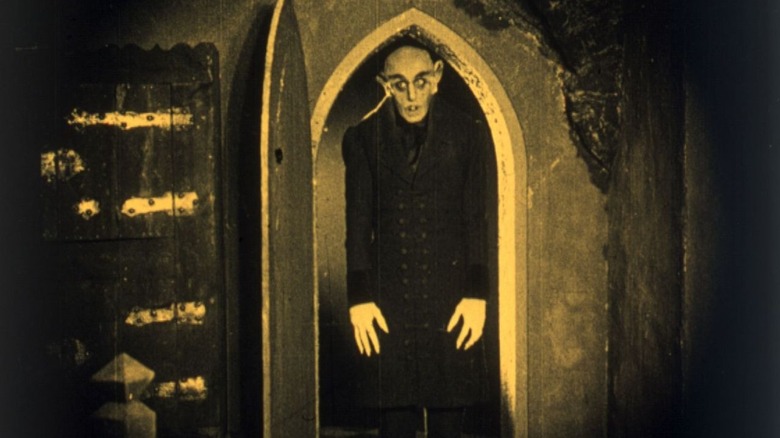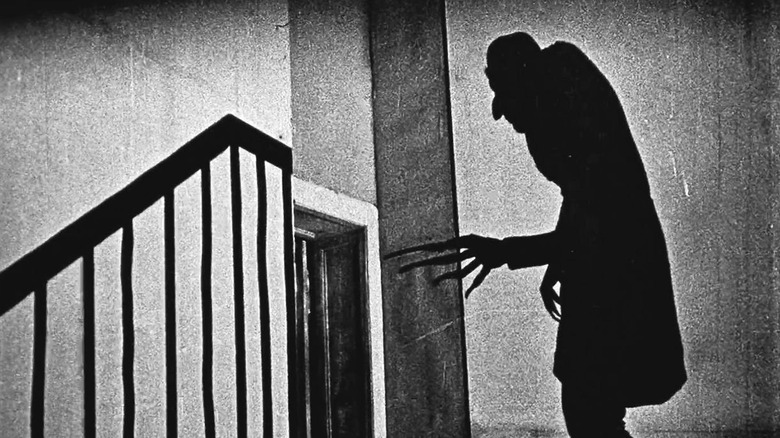How Nosferatu Director F.W. Murnau Queered The Cinematic Vampire Forever
Celebrating its 100th birthday this year, F.W. Murnau's "Nosferatu" is the first widely-known vampire film. The unauthorized retelling of Bram Stoker's 1896 novel "Dracula," Murnau's "Nosferatu" is one of the most celebrated works of German expressionist cinema. While "Dracula" took inspiration from the lesbian vampire novella "Carmilla" and Bram Stoker was rumored to be a closeted homosexual, it was Murnau's deviation from "Dracula" that allowed him to use "Nosferatu" as a vehicle to explore the social and sexual anxieties during 1920s Germany, thereby queering the cinematic vampire forever.
Following Germany's loss in World War One, Germany saw a massive social change during the Weimar Republic — the democratic transition between the monarchy and National Socialism. This change brought new political and social attitudes, especially in regard to the autonomy of women. During the war, women were permitted to the public work space, and in the years that followed, homosexuality and gay subcultures became publicly known.
As with any large cultural change, there were plenty that clung tightly to their traditional values, and a wave of anxiety permeated throughout society. Murnau tapped into these anxieties, and used expressionist film techniques to bring these fears to the forefront. Utilizing the creature of the vampire, Murnau used "Nosferatu" as an allegory for the male fears of women's liberation, the blatant expression of queerness, and the growing xenophobia surrounding Eastern immigrants and the Jewish people.
The plot of Nosferatu
Newlyweds Hutter (Gustav von Wangenheim) and Ellen (Greta Schröder) are enjoying their perfect life in the country when Hutter is tasked with visiting Transylvania to sell a house to Graf Orlok a.k.a. Nosferatu (Max Schreck). Upon arrival, there is noticeable tension between the two. While it'd be easy to dismiss it as nothing more than a bloodthirsty vampire craving his next meal, it's clearly coded as a homoerotic desire.
Hutter is eventually bitten, but has no memory of the ordeal. When Orlock sees a photo of Ellen in a locket, he expresses his desire for her and decides to travel to Germany by coffin on a boat. Rats carrying the plague on the ship kill all aboard, except for Orlock, and Hutter does his best to travel back to town by horseback in an attempt to stop him before he gets to Ellen.
As soon as Nosferatu arrives, the town begins to die of the plague. Ellen, having read a book about vampires given to her husband by the Romanian people, chooses to distract him until the sun comes up and he is destroyed. Ellen welcomes Count Orlok into her bedroom, allows him to feast upon her, and saves the town by exposing him to the sunlight and putting an end to the plague.
Horror from the inside out
With "Nosferatu" being an expressionist film, albeit a grounded one compared to something like "The Cabinet of Dr. Caligari," Murnau's fearful moments were crafted not by external factors, but the psychological fears from within. Queer desire, female desire, and the presence of eastern European/Jewish "intrusion" were prominent societal anxieties, and by using chiaroscuro lighting techniques, he was able to dissect the character's psyches and uneasiness with their own sexual repression.
Murnau was allegedly gay himself, and despite the public knowledge of homosexuality in Germany at this time, it was still considered a criminal (and pathological) act. There was no way for Murnau to explicitly dissect these themes, so instead they are hidden in the subtext of "Nosferatu"
Nosferatu is presented as the double of Hutter, representative of the gay desire that Hutter desperately tries to repress. Nosferatu is not subtle with his desires, frequently staring at Hutter for long periods of time, the black around his eyes darkened to emphasize his gaze. At one point Hutter cuts himself, and Nosferatu grabs his finger to suck on it. Was he craving blood, or something more?
The closer Nosferatu gets to Hutter, the weaker his memory gets, and the smaller the film camera's iris gets: a clear act of repressing his desire. While much has been said regarding Max Schreck's blatantly antisemitic appearance as Nosferatu, what is frequently left analyzed is how phallic he appears in just about every frame. He's long, sleek, and rounded on top, frequently inserting himself into dark, thin doorways that only emphasize how much he looks like, well, you know.
It all sources back to Nosferatu
While "Nosferatu" is certainly not the first depiction of a vampire, it is the mainstream film that formed the roots that every vampire movie since has branched out from. Whether it be using sexuality as a means to lure in new prey, or the shadow cast on the wall, personifying the shadows of shame that follow us all, "Nosferatu" is there.
The Universal monster movies, the lesbian vampire films of the 1970s, the flamboyant films of the 1980s, even the aggressively masculine vampire films of the late '90s and early '00s, all owe at least something to "Nosferatu" whether in direct inspiration or intentional opposition. With queerness embedded in our first mainstream cinematic vampire, all vampire films have queer elements embedded within their DNA. There's a running gag that "all vampires are gay" or "there's no such thing as a heterosexual vampire," and with "Nosferatu" acting as the great-great-granddaddy of all vampire films, there's no denying it. F.W. Murnau queered vampires forever.



